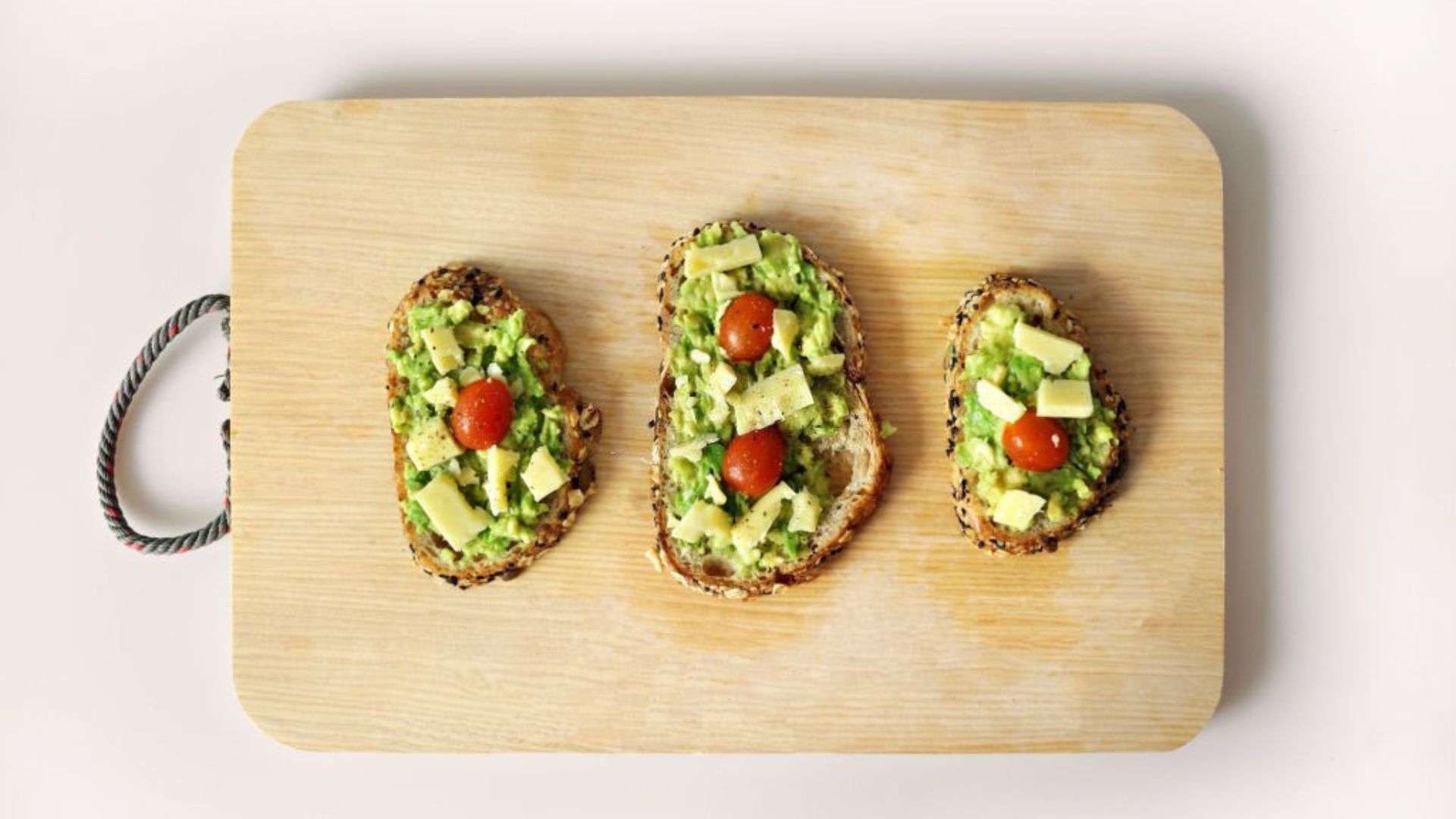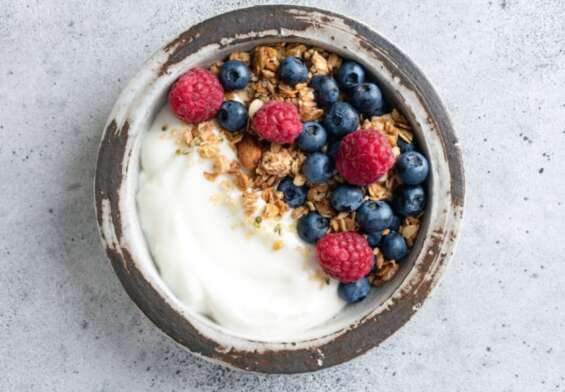
Low Sodium Diet: Reduce Salt Intake for Better Heart Health
A low sodium diet can be beneficial to many people, as it helps to reduce the risk of high blood pressure, heart disease, and stroke. Sodium is an essential mineral for the body, but too much can be harmful. A low sodium diet helps to reduce the amount of sodium in the diet and encourages the consumption of healthy, nutritious foods. Eating a low sodium diet can also help to reduce water retention, improve kidney function, and reduce inflammation. By following a low sodium diet, people can enjoy a healthier lifestyle and improved overall health.
How to Avoid Sodium in Your Everyday Diet
Ah, sodium. It’s the silent villain in so many of our favorite dishes, lurkin’ in the shadows, ready to wreak havoc on our diet. But fear not! Here are some tips to help you avoid sodium in your everyday diet.
Skip the salty snacks. Sure, they taste good. But they’re also packed with sodium! Instead, reach for some healthier options like unsalted nuts and popcorn, or unsalted pretzels and crackers.
Read the labels. When you’re at the grocery store, take a few moments to check out the nutrition labels on the foods you’re buying. If it has more than 200 milligrams of sodium per serving, put it back on the shelf!
Cut back on condiments. From ketchup to soy sauce, many condiments are loaded with sodium. So, try to use them sparingly.
Say no to fast food. Fast food is an absolute nightmare when it comes to sodium. So, do your best to avoid it altogether.
Spice up your meals. Instead of relying on salt to make your meals tasty, try using herbs, spices, and other flavorings to add more flavor.
There you have it! Follow these tips and you’ll be well on your way to avoiding sodium in your everyday diet. Bon appétit!
Tips for Eating Low Sodium at Restaurants
Ask your server to go easy on the salt shaker! Let them know you’re ordering low sodium and that you’d appreciate it if they didn’t go too heavy on the seasoning.
Request that sauces and dressings be served on the side so you can control the amount of sodium you consume.
Stick with grilled, baked, or broiled items as opposed to fried foods.
Skip the bread basket. You don’t want to fill up on something that’s likely high in sodium.
Pass on the pickles, olives, and other salty garnishes.
Ask your server to check with the chef about certain ingredients in the dishes you’re considering.
Don’t be afraid to ask for something to be prepared differently. Most restaurants will be accommodating if you give them a heads up.
Pass on the salt and pepper shakers when you’re at the table. You don’t want to be tempted!
Consider ordering a few side dishes and making your own meal.
Don’t forget to order a delicious beverage. Low-sodium drinks like sparkling water, unsweetened tea, or plain coffee will help keep you hydrated and your sodium levels in check.
Delicious Low-Sodium Recipes
Salt-Free Sloppy Joe Sliders: Skip the sodium-laden canned sauce and opt for a delicious homemade version instead. Mix together tomato sauce, honey, Worcestershire sauce, garlic powder, onion powder, chili powder, smoked paprika, and pepper. Simmer until thick and serve on mini buns or slider buns with your favorite toppings.
Low-Sodium ‘Fried’ Chicken: Skip the sodium-filled fried chicken and give this version a try. Dip chicken pieces in buttermilk and coat with a mixture of almond meal, garlic powder, onion powder, smoked paprika, and pepper. Bake in a preheated oven until cooked through and golden brown. Serve with a side of your favorite veggies.
No-Salt Chili: This chili is sure to be a hit without all of the added salt. In a large pot, sauté onion, garlic, and bell peppers until softened. Add ground beef, diced tomatoes, black beans, tomato paste, chili powder, cumin, smoked paprika, oregano, and pepper. Simmer for 30 minutes and top with fresh cilantro, shredded cheese, and a dollop of sour cream.
Sweet and Sour Pork: This classic dish is simple to make and doesn’t skimp on flavor. In a large skillet, heat oil and sauté pork pieces until lightly browned. Add pineapple chunks, onion, bell pepper, garlic, and ginger. In a separate bowl, combine ketchup, honey, apple cider vinegar, and pepper. Pour mixture over pork and simmer until thickened. Serve over steamed rice.
‘Fried’ Fish Tacos: These tacos are a no-salt version of the classic. Dip fish fillets in buttermilk, then coat with a mixture of almond meal, smoked paprika, garlic powder, onion powder, and pepper. Bake in a preheated oven until cooked through and golden brown. Serve on warmed tortillas with cabbage, tomato, and a squeeze of lime.
Top Low-Sodium Fruits and Vegetables
If you’re trying to cut down on your sodium intake, you might think you have to say goodbye to all your favorite fruits and veggies. But not so fast! Here are some low-sodium options that will keep your taste buds happy and your body healthy.
Start with some apples! These juicy treats have zero milligrams of sodium per serving and are packed with fiber and Vitamin C. Or, if you’re in the mood for a salad, try some artichokes. They come with a low sodium count of just 10 milligrams per serving and are full of minerals and antioxidants.
If you want something a little more exotic, try some lychees! These Chinese fruits are low in sodium (just 1 milligram per serving) and high in Vitamin C and copper. Or why not try some celery? It has an impressively low sodium count of just 4 milligrams per serving, and it’s great for digestion.
And don’t forget about the cruciferous vegetables! Broccoli and Brussels sprouts both have just 8 milligrams of sodium per serving, and they’re loaded with nutrients and fiber.
So don’t be afraid to enjoy your fruits and veggies! With these low-sodium options, you can still have your snack and eat it, too.
Understanding the Benefits of a Low Sodium Diet
Are you tired of feeling bloated and sluggish? Do you think that a low sodium diet might be the answer to solving your problems? Well, you’re in luck! A low sodium diet can offer many amazing benefits, and while it may sound intimidating, it’s actually not as complicated as you might think.
First things first, what is a low sodium diet? A low sodium diet is a plan that helps you to reduce the amount of sodium (salt) in your diet. The recommended amount of sodium for an adult is less than 2,300 milligrams per day, which is about the same as one teaspoon of table salt. So, if you’re looking to get the most out of a low sodium diet, it’s important to try to keep your daily sodium intake below this limit.
Now, let’s talk about the benefits of a low sodium diet. Some of the most common benefits include:
Reduced risk of high blood pressure: This is one of the main reasons why people choose to go on a low sodium diet. When you reduce your sodium intake, your body is better able to regulate your blood pressure and keep it at a healthy level.
Improved digestion: Sodium can cause some serious digestive issues, including bloating and constipation. If you’re looking to improve your digestive health, reducing your sodium intake can certainly help.
Better taste: Believe it or not, reducing your sodium intake can actually make food taste better. When you’re eating less salt, you’ll be able to taste the other flavors in your food more clearly.
Weight loss: If you’re trying to lose weight, reducing your sodium intake can help. When you consume less sodium, your body will be better able to regulate its water balance, which can help you to shed some extra pounds.
So, there you have it! A low sodium diet isn’t as scary as it may sound, and it can offer some amazing benefits. So, if you’re looking to improve your overall health and wellness, why not give it a try? Who knows, you might be surprised at what you find!
What to Look for on Nutrition Labels When Following a Low-Sodium Diet
Are you following a low-sodium diet but don’t know what to look for on nutrition labels? Don’t worry, we’ve got you covered! Here are some tips to help you navigate the nutrition label jungle and make sure you’re sticking to your low-sodium diet:
- Look for the sodium content listed in milligrams (mg). It should be lower than 140mg per serving.
- Check the percent daily value (%DV) for sodium. It should be 5% or lower.
- Check for hidden sources of sodium such as sodium nitrite, monosodium glutamate (MSG), baking soda, baking powder, and disodium phosphate.
- Be sure to read the ingredients list for high-sodium items like broth, soy sauce, and other condiments.
- Avoid processed and canned foods that tend to be high in sodium.
Following these guidelines will help you maintain a low-sodium diet without sacrificing flavor. Bon appetit!
Hydration and Low-Sodium Diets
Are you on a low-sodium diet and feeling parched? Don’t fret, there are plenty of ways to stay hydrated without breaking your dietary restrictions.
First, it’s important to understand why a low-sodium diet is beneficial. Sodium helps regulate the amount of fluid in our bodies, so if you consume too much, it can lead to high blood pressure, stroke, heart disease, and more. On the flip side, not consuming enough sodium can also be dangerous, so it is important to maintain a healthy balance.
Now that you know why it’s important to watch your sodium intake, here are some tips for staying hydrated on a low-sodium diet.
First, stay away from sugary drinks and sports drinks, which are notoriously high in sodium. Instead, opt for water, herbal teas, and freshly-squeezed juices. If you need something with a little more flavor, try adding some fresh fruits and vegetables to your water.
Also, try to limit your intake of processed foods, which are often loaded with sodium. Instead, focus on consuming fresh, whole foods that are naturally low in sodium.
Finally, don’t underestimate the power of snacking. Eating smaller meals throughout the day can help you stay full and hydrated. Reach for fresh fruits and vegetables, as well as low-sodium nuts and seeds.
So, there you have it – staying hydrated on a low-sodium diet doesn’t have to be a chore! With a few simple swaps, you can stay healthy and hydrated at the same time.
Alternatives to Salt When Cooking
Are you tired of the same old salt when cooking? Look no further! Here are some alternative flavorings to spice up your meals:
- Lemon juice – a great way to add a tangy kick to your dishes.
- Vinegar – a great substitute for salt in marinades, dressings, and sauces.
- Herbs and spices – from basil to garlic to cumin, herbs and spices can add a whole new dimension to your dishes.
- Soy sauce – a great source of umami flavor, soy sauce can bring a delicious depth to your meals.
- Hot sauce – for those who like it spicy, hot sauce is a great way to add heat to your dishes.
- Honey – for a touch of sweetness, honey can be drizzled over dishes or used as a marinade.
- Fruit – from oranges to apples to mangos, fruit can add a great hint of sweetness to your meals.
- Miso paste – a great source of umami flavor, miso paste can add a delicious depth to your dishes.
- Nutritional yeast – a great vegan alternative to cheese, nutritional yeast can add a cheesy flavor to your dishes.
- Coconut aminos – a great soy sauce alternative, coconut aminos can add a great depth of flavor to your dishes.
So don’t be afraid to experiment with different flavorings to give your dishes a unique twist!
The Effects of Too Much Sodium on the Body
Are you feeling a little salty? Well, you might be if you are consuming too much sodium! Sodium is an essential nutrient for the body, but too much of it can cause serious harm to your health. In this article, we’ll explore some of the effects of too much sodium on the body.
First and foremost, it is important to note that sodium is necessary for the body to function properly. It helps to regulate fluid levels, maintain blood pressure, and even make muscle and nerve cells work more efficiently. That being said, having too much sodium can lead to a variety of health issues.
One of the most common effects of too much sodium is high blood pressure. The more sodium you consume, the higher your blood pressure can become. This can lead to an increased risk of stroke, heart attack, and other cardiovascular diseases.
Another effect of too much sodium is water retention. This means that your body will hold onto more water than normal, which can cause swelling in your joints, hands, and feet.
Finally, eating too much sodium can cause your body to become imbalanced. This can lead to fatigue, headaches, and even depression. Not exactly the most ideal situation!
All in all, it is important to remember that sodium is an essential nutrient for the body. However, consuming too much sodium can have some serious negative effects on your health. So, if you’re feeling a little salty, make sure to reduce your sodium intake and keep your health in check.
How to Reduce Sodium Without Sacrificing Flavor
Ah, the age-old dilemma: how to reduce sodium without sacrificing flavor. It’s a challenge that has stumped home cooks and professional chefs alike. But fear not, fellow foodies! We have the perfect solution: a few simple tricks to reduce the amount of sodium in your meals without sacrificing the flavor.
First up, let’s talk about seasonings. To reduce sodium without sacrificing flavor, opt for herbs, spices, and other seasonings that can provide a flavor punch without all the salt. Think garlic, onion, cumin, paprika, oregano, and turmeric. These spices can jazz up any meal without the extra sodium.
Speaking of salt, consider using alternative types of salt. For example, try swapping out table salt for sea salt, which is typically lower in sodium than regular table salt. Or, switch to kosher salt, which is typically coarser than table salt and contains less sodium by volume.
Another great way to reduce sodium without sacrificing flavor is to use fresh ingredients that are naturally low in sodium. Think fresh fruits, vegetables, and lean meats. These ingredients provide plenty of flavor, and also allow you to control the amount of salt you use.
Finally, don’t forget about condiments. Many store-bought condiments, such as ketchup, mustard, and soy sauce, are surprisingly high in sodium. So opt for low-sodium versions of these condiments to reduce your sodium intake without sacrificing flavor.
With these simple tricks, you can reduce the amount of sodium in your meals without sacrificing flavor. Bon appétit!
Exploring Different Low-Sodium Diets and Their Benefits
Low-sodium diets have become increasingly popular recently, as more and more people are looking for ways to reduce their salt intake and improve their overall health. But with so many different diets out there, it can be hard to know which one is right for you. Luckily, we’ve done the research for you, so you can make an informed decision about the best low-sodium diet for your lifestyle.
Let’s start with the DASH diet, which stands for Dietary Approaches to Stop Hypertension. The DASH diet focuses on reducing sodium consumption, as well as increasing the consumption of fruits, vegetables, and whole grains. The idea behind this diet is that it helps to lower high blood pressure and reduce the risk of heart attack, stroke, and other cardiovascular diseases.
Next, we have the Mediterranean diet, which is based on the traditional diet of people living in countries around the Mediterranean Sea. This diet emphasizes healthy fats like olive oil, nuts, and fish, as well as plenty of fruits, vegetables, and whole grains. The key to this diet is to limit your red meat intake and focus on eating more plant-based foods.
And lastly, we have the Low-Sodium Diet. This diet focuses on reducing your salt intake by avoiding processed foods, fast foods, and canned goods. Instead, you should focus on fresh fruits and vegetables, whole grains, and low-sodium foods. It also encourages you to limit your sodium intake to no more than 2,300 milligrams per day.
So, there you have it! These three different diets all offer unique benefits for those looking to reduce their daily sodium intake. Whether you’re looking to lower your blood pressure, improve your heart health, or just want to eat healthier, one of these diets is sure to be the perfect fit for you. And while making the switch to a low-sodium diet can be challenging at first, with a little bit of humor and a lot of dedication, you’ll be on your way to living a healthier, salt-free life in no time.
Conclusion
The low sodium diet is a healthy way of eating that can help to reduce blood pressure, improve heart health, and reduce the risk of developing serious health conditions such as hypertension, stroke, and heart disease. By avoiding processed foods, eating plenty of fresh fruits and vegetables, and limiting sodium in your diet, you can enjoy all of the health benefits of a low sodium diet. With careful planning and an understanding of how to incorporate low sodium foods into your diet, you can enjoy a healthy and satisfying diet.











